

Independence Hall
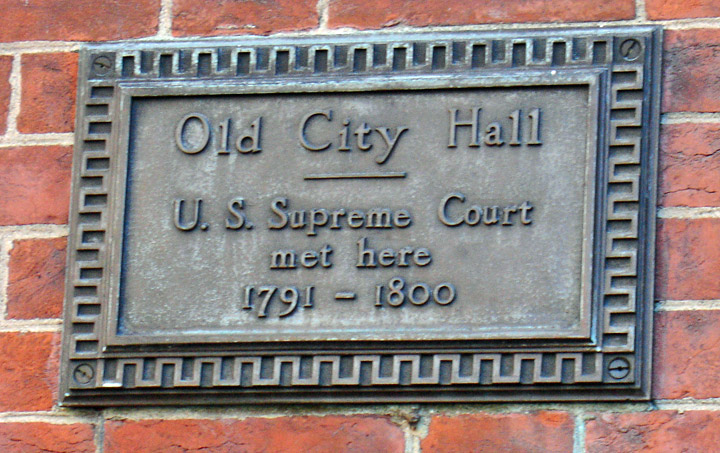

Let's start at Old City Hall. The building was erected between 1789 and 1791. It
was first intended for use as City Hall, but from 1791 to 1800 it housed the
United States Supreme Court, which was presided over by John Jay until 1795. It
served as Philadelphia's City Hall from 1800 to 1874, when the city government
moved to the present site.
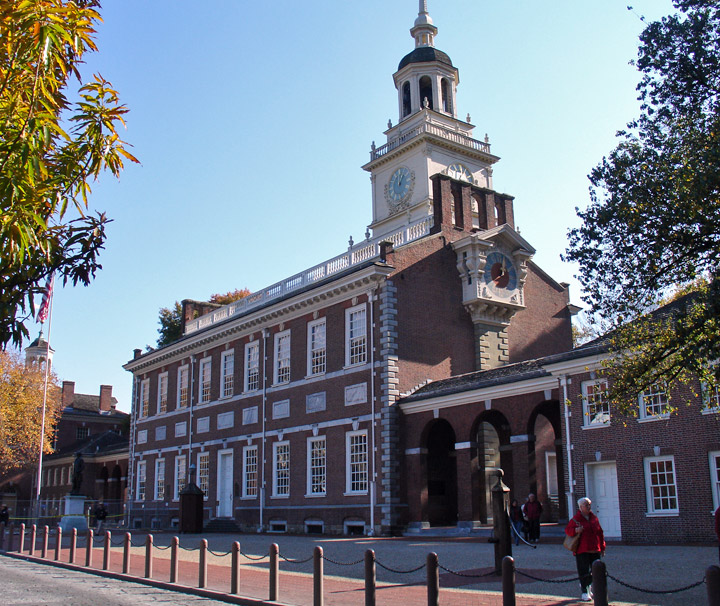
Independence Hall
The State House or, as it is popularly known, Independence Hall, was begun in 1732 and considered finished by 1756 as the Pennsylvania State House. Its architects are thought to have been Edmund Woolley and Andrew Hamilton. Until 1799 the building served as the meeting place of the provincial and state governments. The Second Continental Congress met here. The Articles of Confederation were drafted and ratified here. And, the stormy sessions of the Constitutional Convention, presided over by Washington, were also held here.
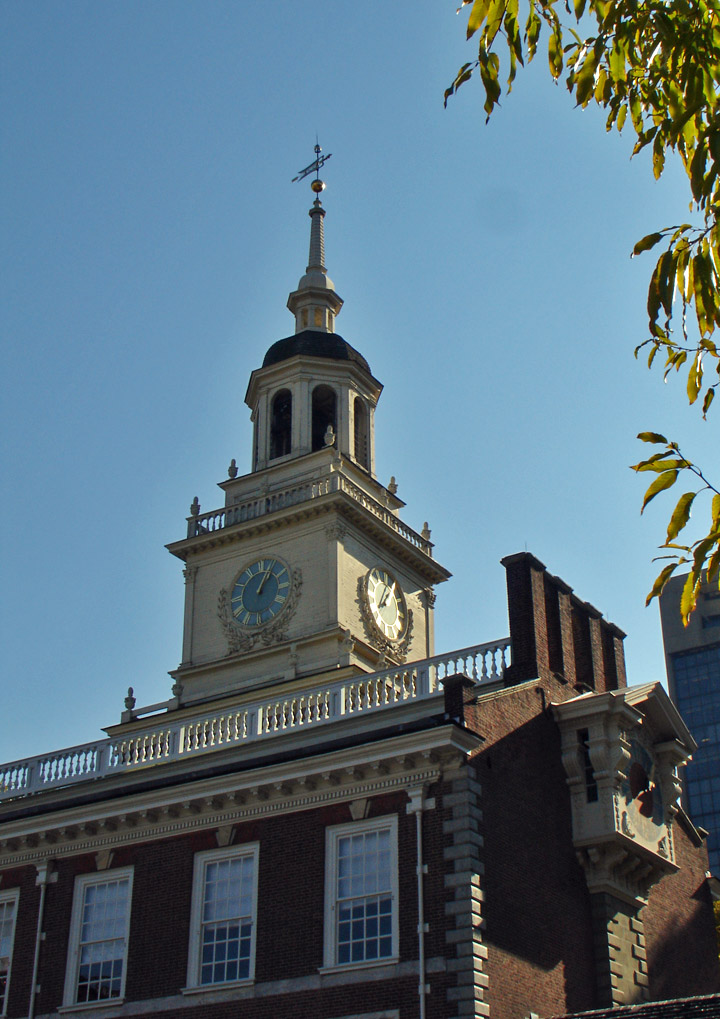
The spire of Independence Hall
The present spire which tops the tower proper was added by William Strickland in
the restoration of 1828 — a fact not generally known.
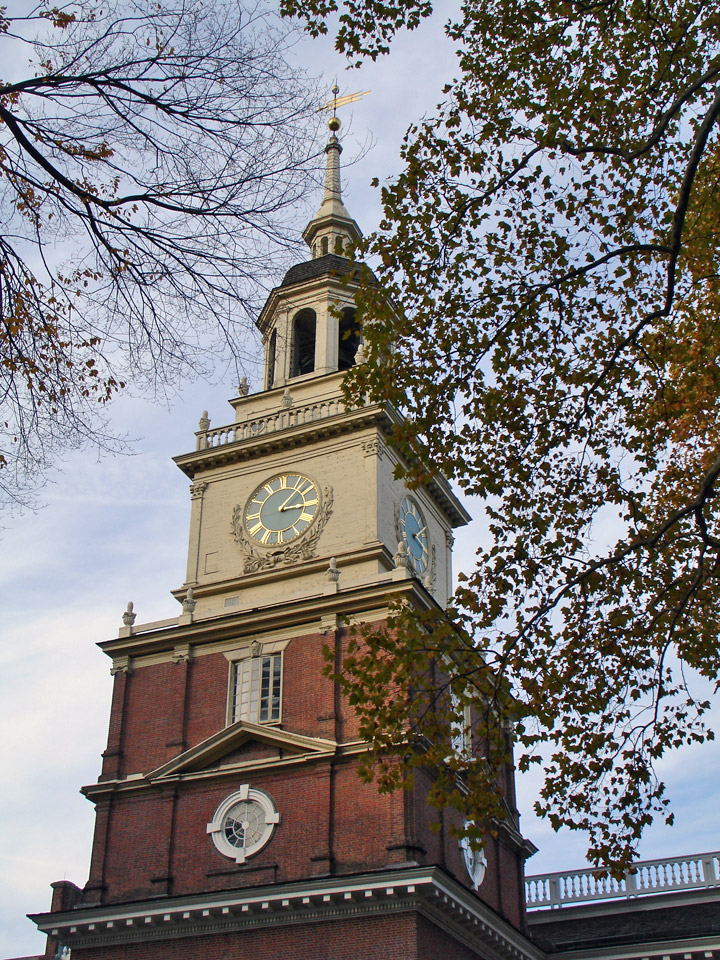

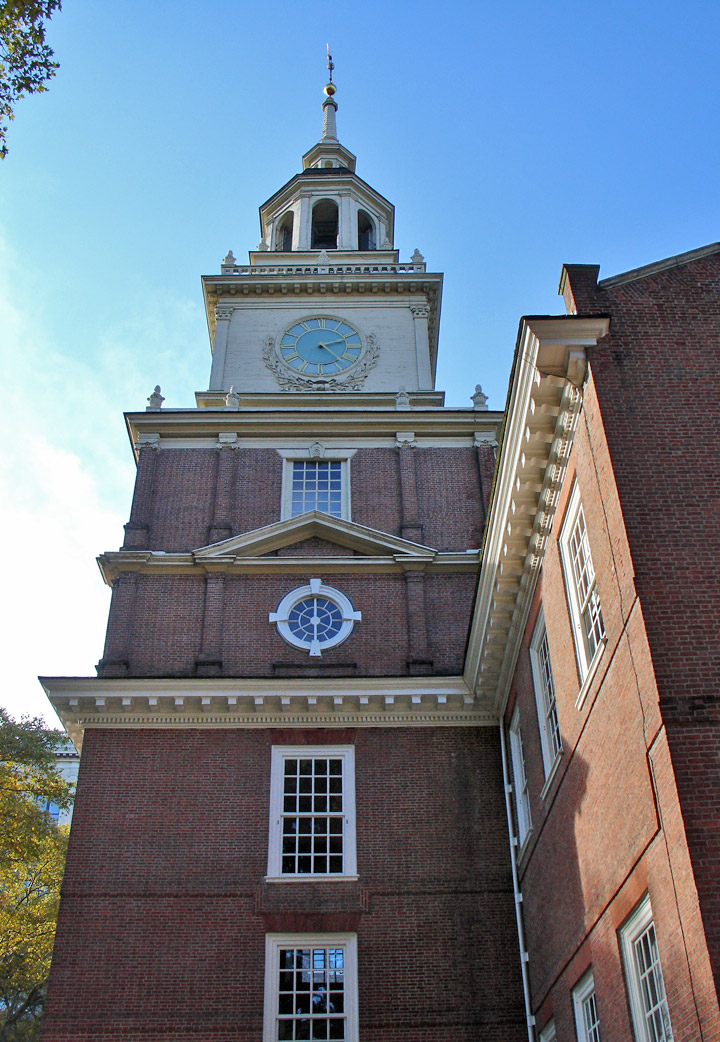
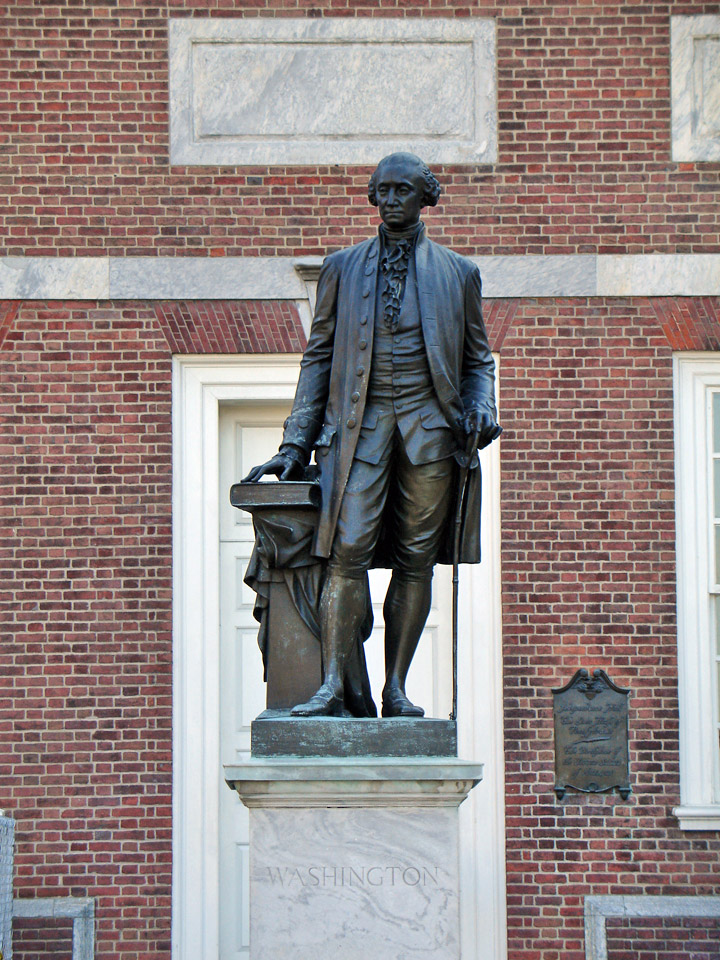
Statue of Washington
In front of the entrance itself is a familiar statue of Washington erected in 1869. Philadelphia schoolchildren, beginning in 1860, gave their pennies to pay for it.
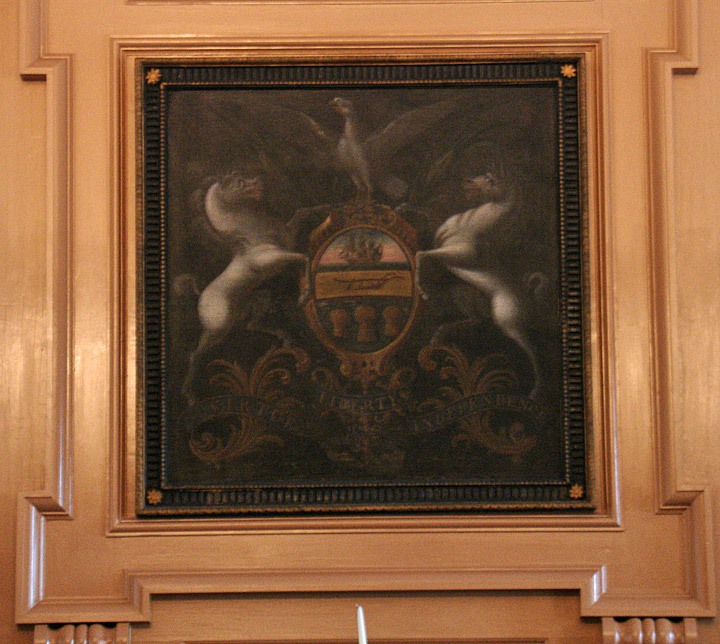
Seal of the State of Pennsylvania

Washington's "Rising Sun" chair
To the left of the entrance hall is the Pennsylvania Assembly Room. Here the
delegates from the thirteen colonies gathered and by July 4, 1776, had adopted
the Declaration of Independence.
The most important treasures in the room are the chair used by Washington during
the Constitutional Convention, with its rising sun carved on its back and the
silver inkstand designed by Philip Syng, used for the signing of both the
Declaration of Independence and the Constitution. The room has been restored to
its appearance at the time of the signing and the chairs, tables and writing
equipment are of the period.
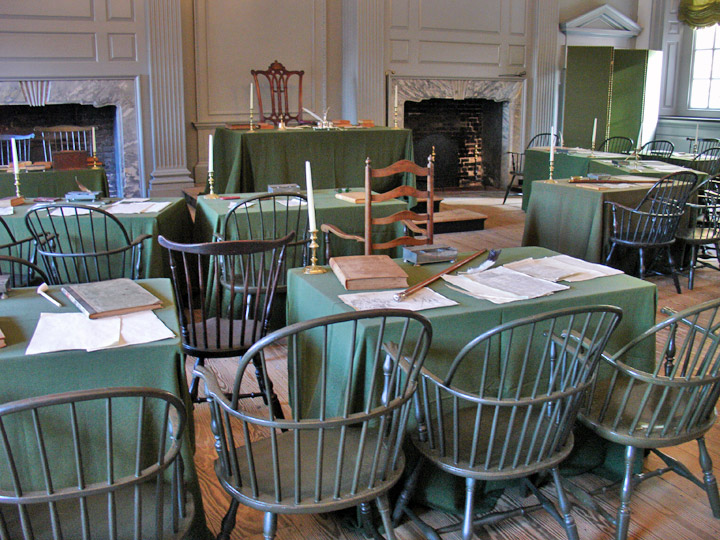
restored Pennsylvania Assembly Room
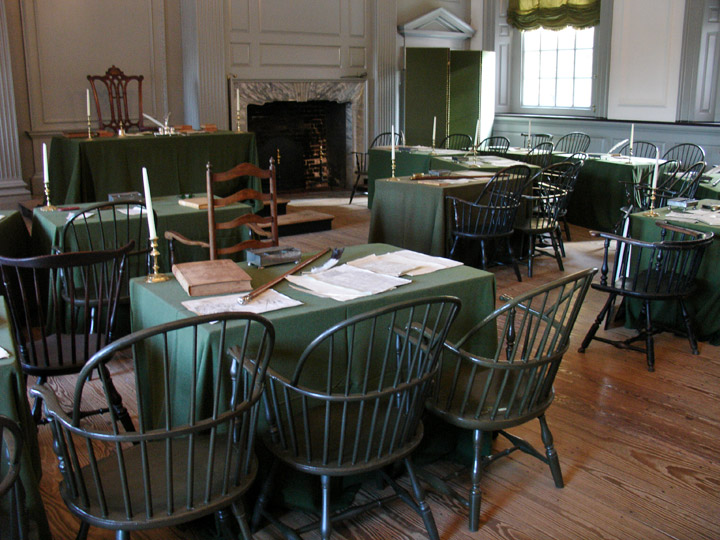
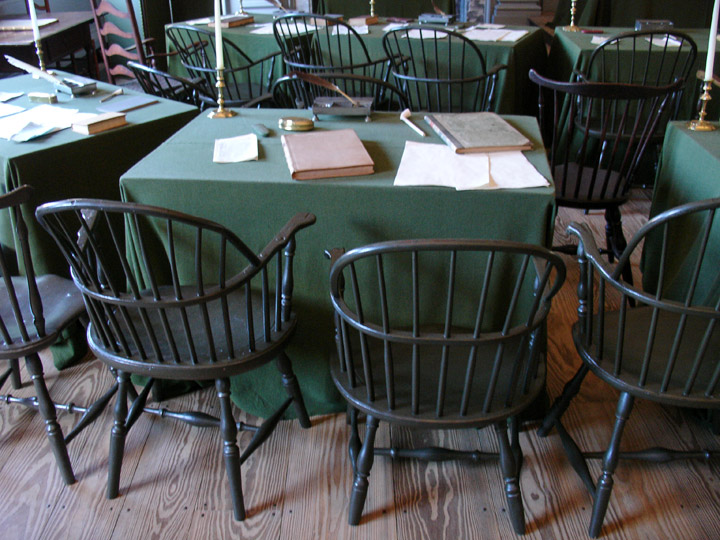
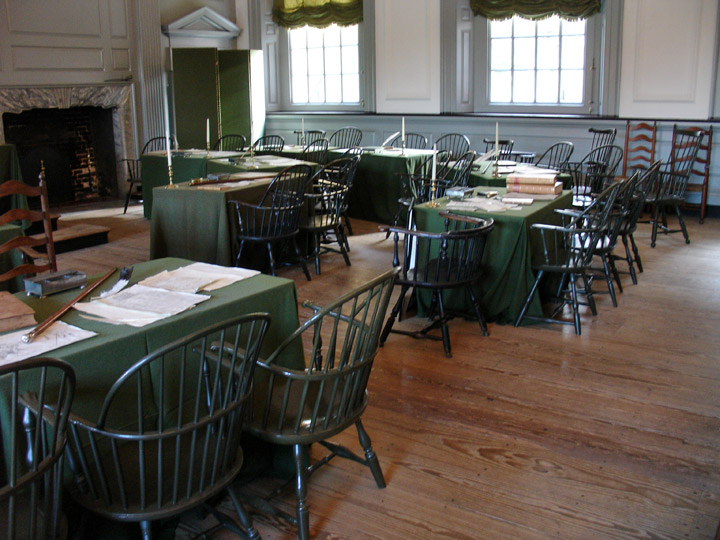
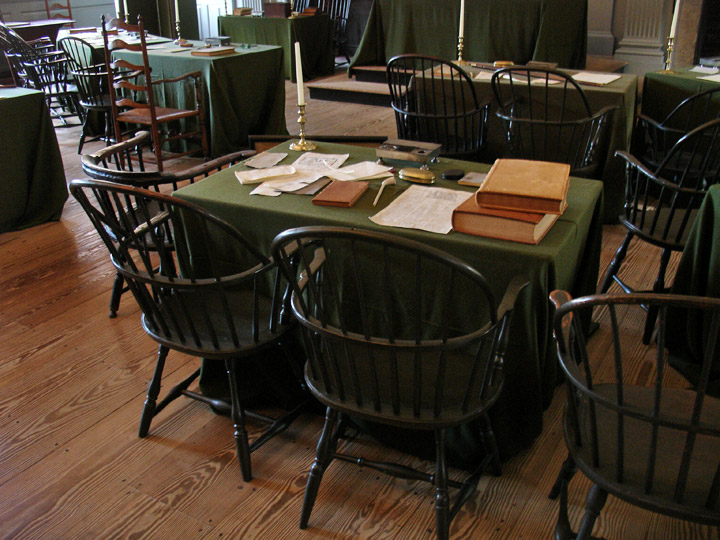
Benjamin Franklin's table at the Constitutional Convention
Supreme Court
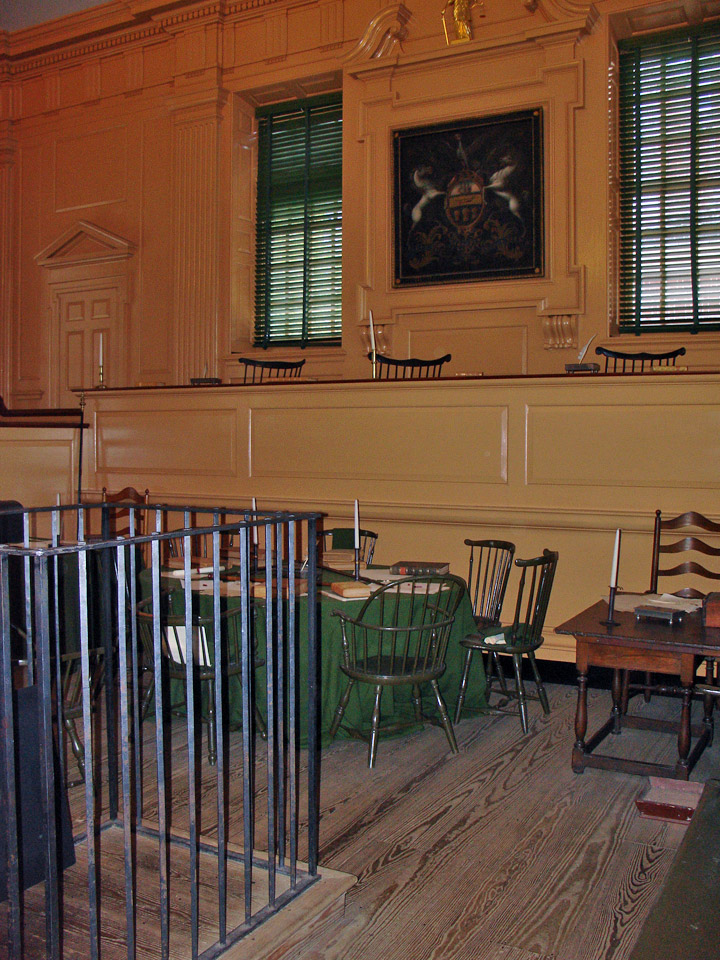
Supreme Court
Across the hall is the Pennsylvania Supreme Court Chamber with its handsome ochre-painted walls and the coat of arms of the Commonwealth above the bench.
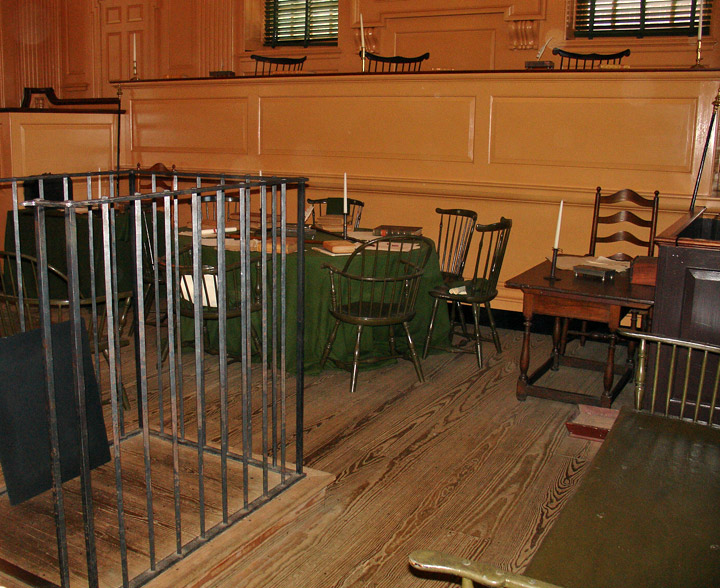
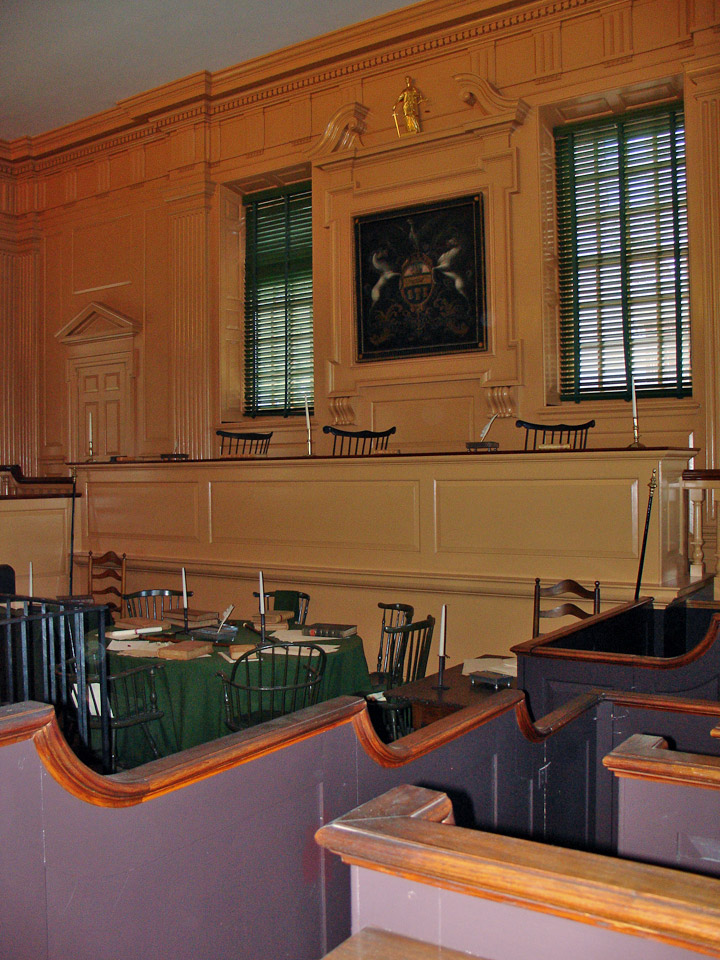
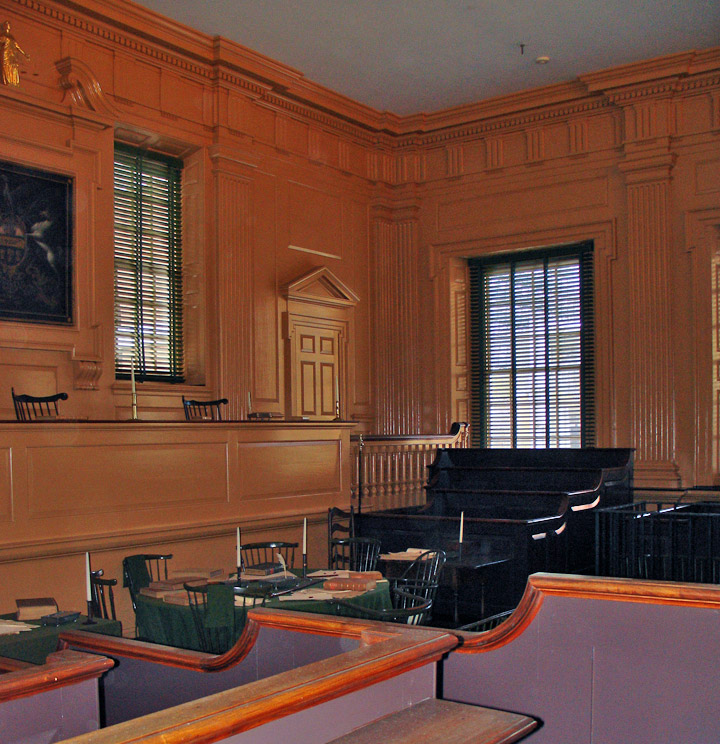
There are a prisoner's dock and jury boxes. Prisoners stood in the dock throughout the course of their court proceedings — giving rise to the expression "stand trial."
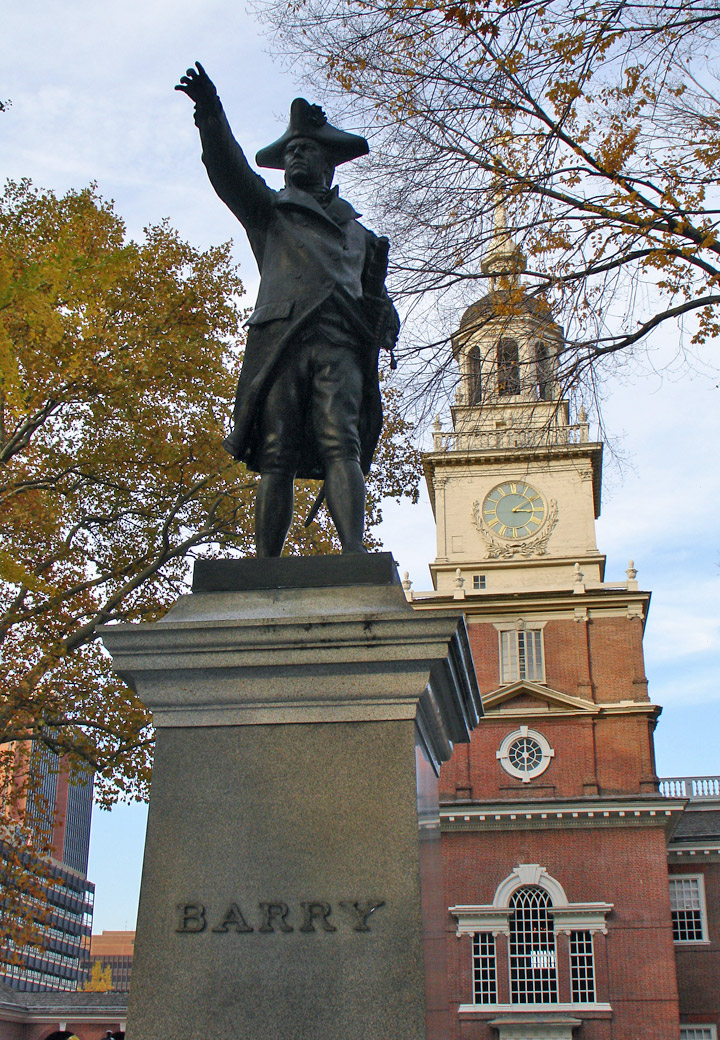
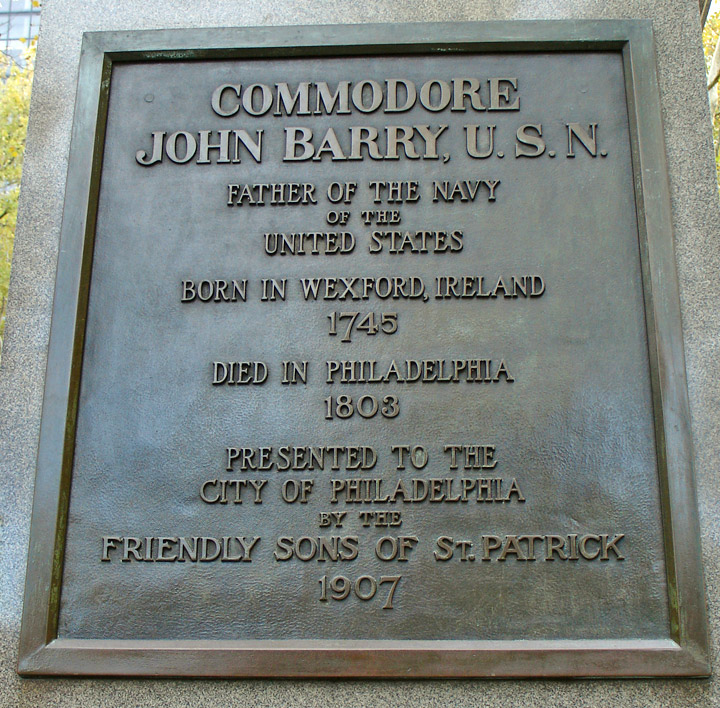
Commodore John Barry
The visitor should ascend the tower staircase slowly to savor the beauty, the
simplicity and the elegance of the tower itself, with its Palladian window
facing the old square and framing the statue of Commodore John Barry, "The
Father of the American Navy," standing among the ancient trees.
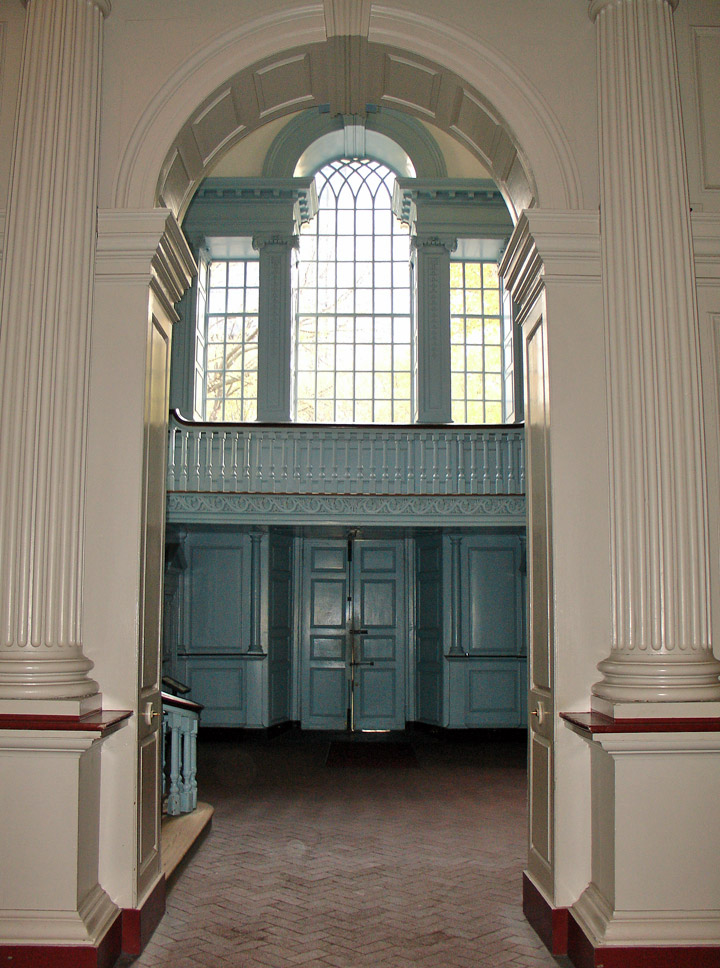
hallway and window
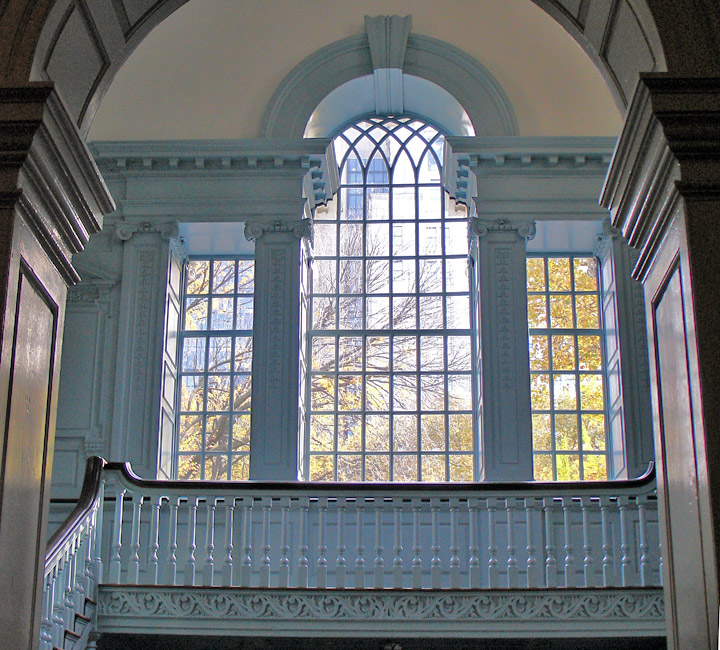

North doorway
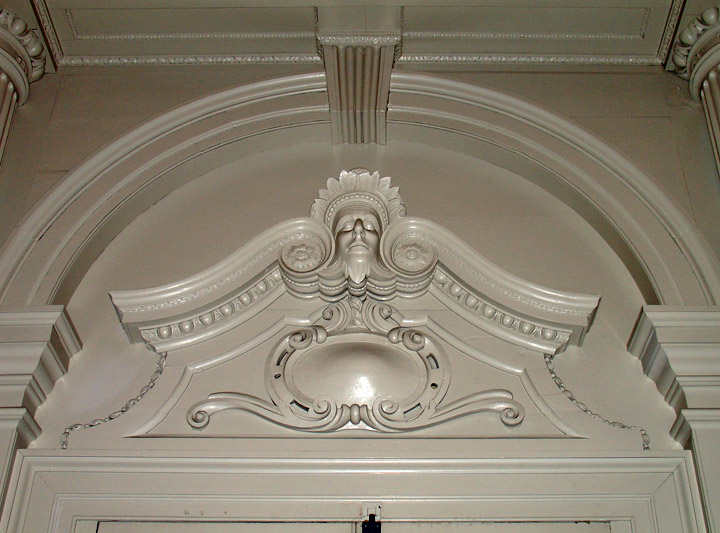
detail above doorway
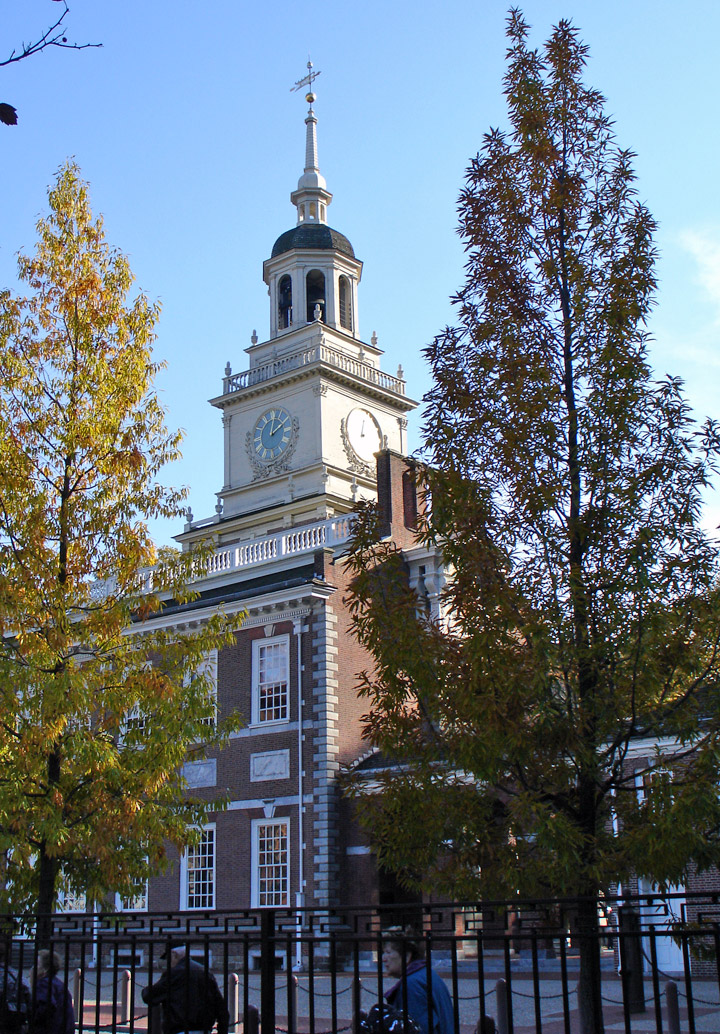
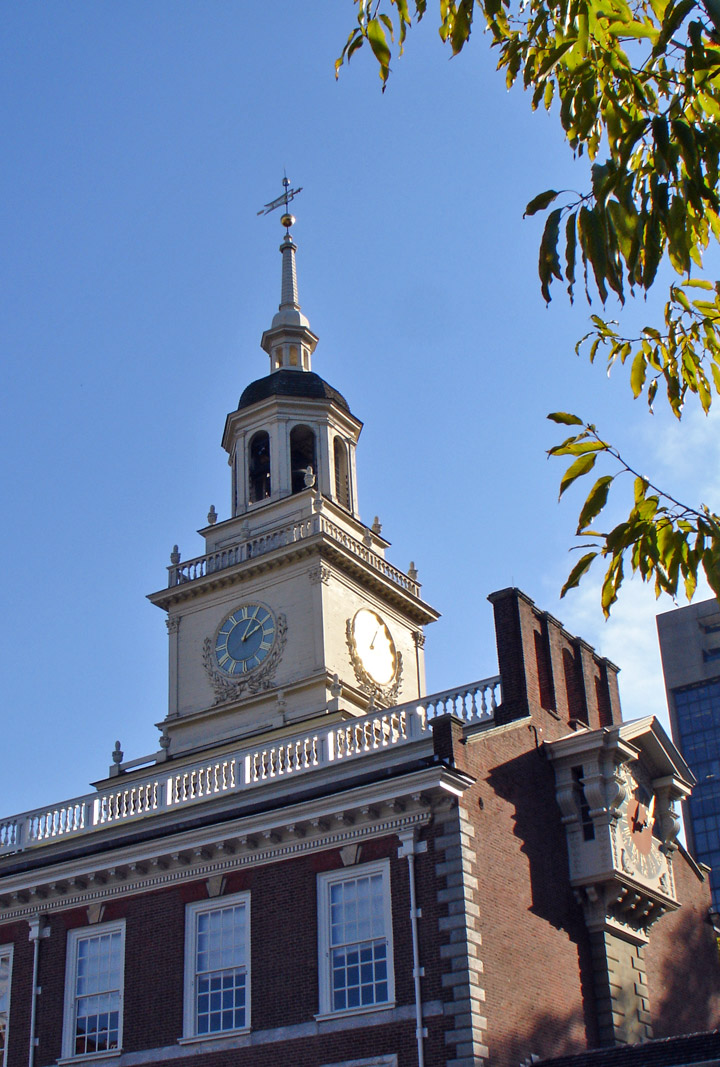
Independence Hall was used for parties in the 19th century, and among those so
honored here were Lafayette, Henry Clay and Presidents Jackson, Van Buren,
William Henry Harrison, Tyler, Polk, Fillmore, Pierce and Buchanan. Among those
illustrious Americans who have lain in state here are Lincoln, Henry Clay, John
Quincy Adams and the Arctic explorer, Elisha Kent Kane.
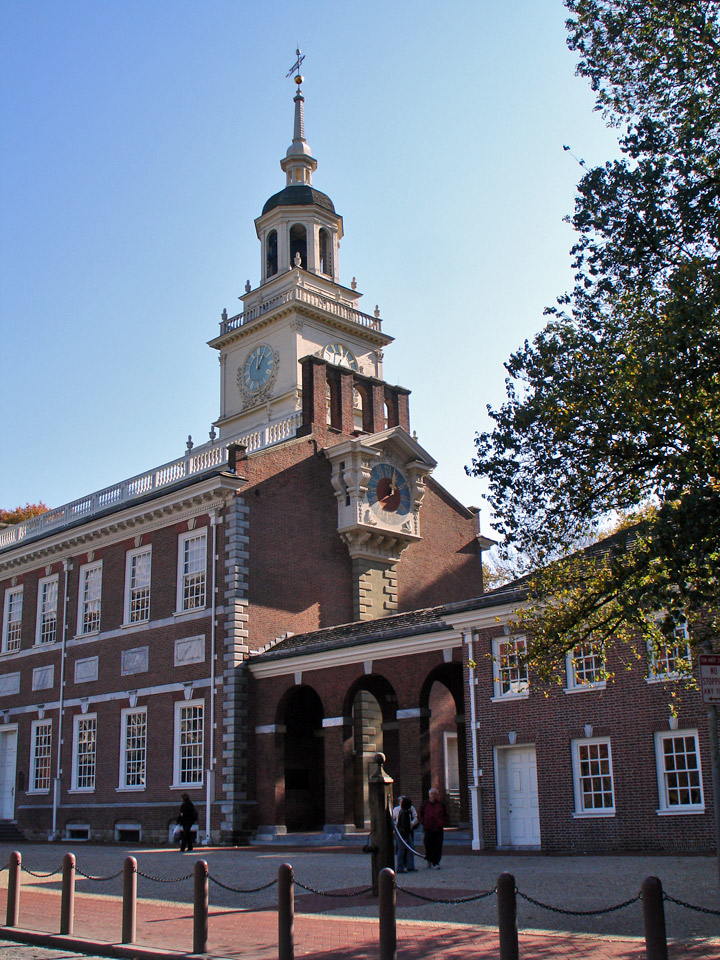
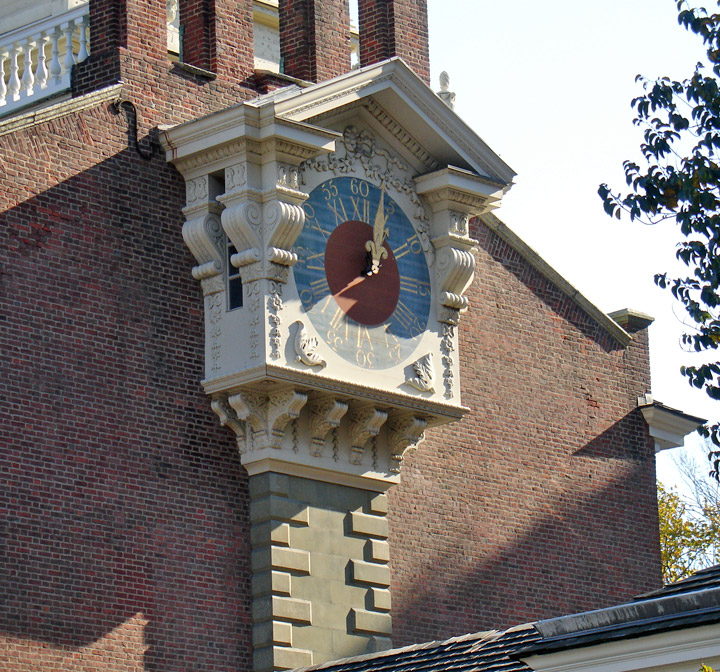
Clock tower
Descending to the first floor, leave Independence Hall by the south door, which
gives onto the square. In 1972 the National Park Service replaced the great
outdoor clock, which was originally set into the west wall in 1752 and removed
in 1828. A 14-foot carved replica of the remarkable clock head was installed on
top of the 40-foot soapstone case structure.
The hurried visitor may rush on, but linger if you can — saunter about the
winding paving-stone paths and look at the Hall from the vantage point of the
square. The proportions of the tower alone delight the eye, the symmetry of the
building — in fact of the entire complex of buildings — is a tribute to the
artisans and men who built it. Here is the balance and order of the 18th century
at its apogee.

Congress Hall
This was once the home of the United States Congress.
Independence Hall (seen from the
Liberty Bell) is flanked on the right by Congress Hall. The newly formed United
States Congress occupied Congress Hall when Philadelphia was the capital of the
United States from 1790-1800. Congress Hall has been restored to the way it
looked in 1793-1800. The first floor was occupied by the House of
Representatives. The upper floor was occupied appropriately, by the upper house,
or the Senate. In 1793, President George Washington was inaugurated here for a
second term. Four years later, in a precedent-setting ceremony in the House of
Representatives chamber, the reins of power were passed from George Washington
to John Adams. At the close of the ceremony, John Adams waited for Washington to
lead the exit, as everyone had grown accustomed to, but Washington insisted on
leaving the room after the new President. Finally, and perhaps most important of
all, the Bill of Rights was ratified while Congress met in these rooms.
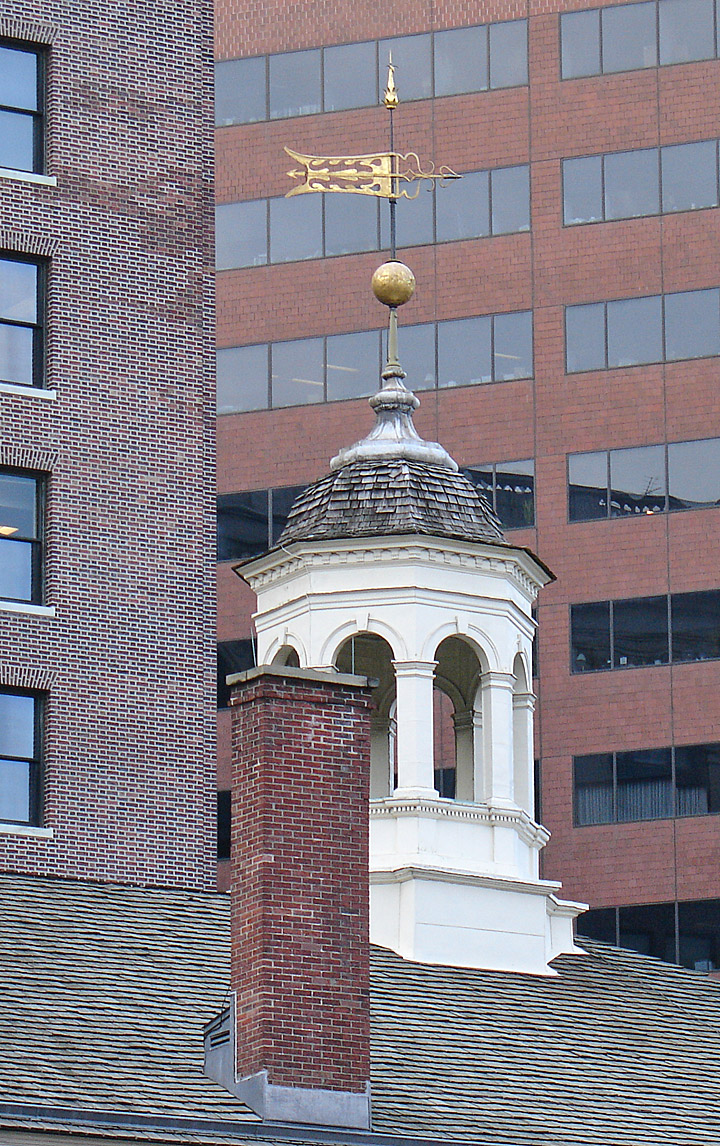
If possible, do not miss the opportunity to tour this building. On the first floor in the House chambers, the valances of dark green above the windows enhance the mahogany of the desks and studded leather chairs. In the south bay is an alcove where Representatives smoked, and drank sherry, port, and madeira. Note too, the small boxes filled with sand near the fireplaces. These were spitting boxes, used in an age when snuff and chewing tobacco were common. Upstairs, 28 of the 32 chairs and the Secretary's desk are authentic. Also remarkable is an 19th-century fresco of an eagle holding an olive branch signifying peace. Notice too, the plaster medallion on the ceiling — an unusual and elegant touch: it has an oval sunburst design honoring the thirteen original states with thirteen stars. The carpet is a reproduction of the original carpet made in the early 1790s by William Sprague of Philadelphia. Its designs are typical patriotic symbols with the centerpiece a chain of 13 state shields. In the corners are cornucopias echoing the wish for abundance in the new land.
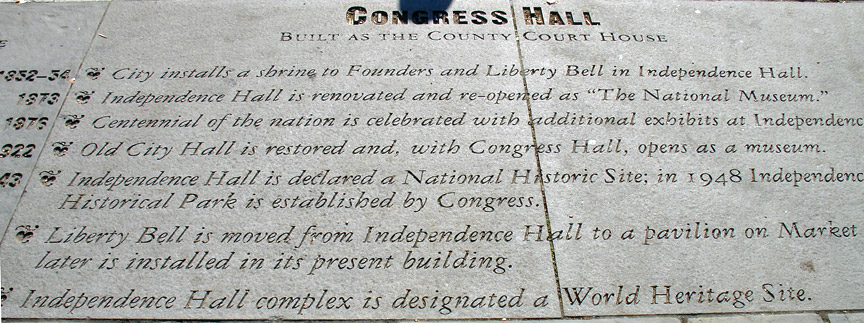
After Congress departed for
Washington, D.C., the Hall reverted back to the
Philadelphia County Courthouse, the purpose it was built for.
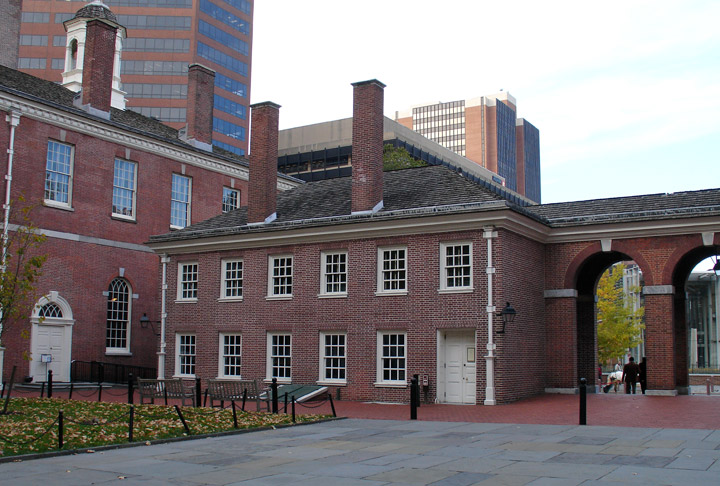

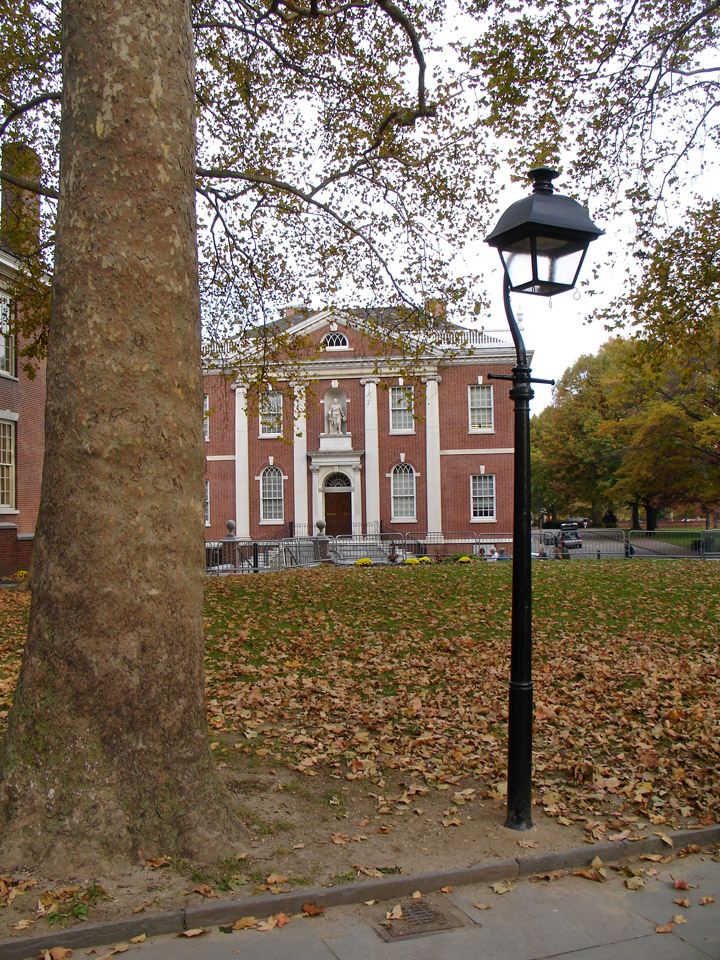
Library Hall
This was the first library in the country open to the public. It was the
forerunner of the Library of Congress.

Library Hall
Founded in 1731 by Benjamin Franklin
and his friends, the Library Company established a collection that was available
for use on the premises and off by interested members of the community. Before
this, books were owned by the wealthy and kept in private collections. During
Colonial Days, the delegates to the Continental Convention were encouraged to
use the resources at the Library, and as such it can be correctly considered the
forerunner of the Library of Congress.
Library Hall was built in 1790 across the street from Philosophical Hall and
survived until the Library Company outgrew the space. The building was torn down
to make room for the Drexel Building and the Library Company moved to 1314
Locust Street (outside the Historic District), where they are to this day. In a
wave of historic preservation, restoration, and recreation in the 1950s, the
Drexel Building was razed and a reproduction of the Library Company's original
building was built. Today, the rebuilt Library Hall houses some of the
collection of the Philosophical Society, who today owns the building.
Parts of the text above adapted from Copyright © 1995-2006 by ushistory.org, owned by the Independence Hall Association